Remember walking into your childhood home, knowing exactly which floorboard would creak, where the phone cord would stretch, and how to adjust the antenna for the best TV reception? Our homes were filled with features that seemed permanent fixtures of domestic life—until they weren’t. These once-common elements disappeared so gradually that many of us barely noticed their exit, only realizing years later that new generations would never experience these quintessential parts of home life. Join us for a nostalgic look at the home features we once took for granted.
1. Phone Jacks in Every Room
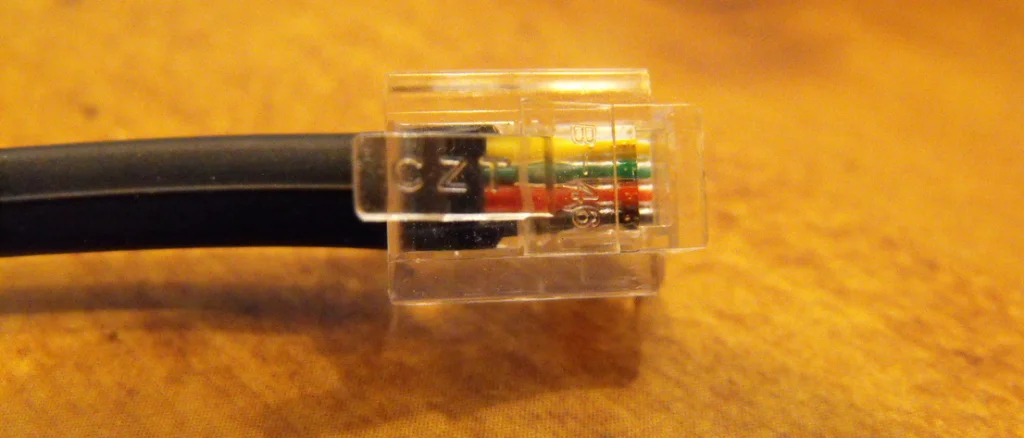
Those little rectangular outlets with the satisfying click of a connecting phone jack were once considered essential infrastructure in any well-designed home. Builders installed them in kitchens, bedrooms, and even bathrooms, ensuring you could always reach the corded family phone no matter where you were. The more affluent homes boasted multiple lines, with teenagers negotiating for their own private numbers and parents installing special ringers to distinguish business calls from personal ones. For those interested in the finer points of the different wires and colors, HowStuffWorks breaks down each part and its respective purpose in allowing us to communicate across vast distances.
Now these plastic portals sit empty and forgotten, like tiny mouths gaping in surprise at their own obsolescence. Many younger homeowners mistake them for some kind of odd electrical outlet, while renovation shows feature contractors casually ripping them out without explanation. The smartphone revolution rendered these once-vital home features into mysterious wall decorations, their purpose as foreign to today’s children as rotary dialing or listening for a dial tone.
2. TV Antenna Adjustments

Television watching once involved a complex ritual of antenna manipulation that younger generations will never experience. Metal “rabbit ears” sprouted from our sets like strange technological flora, requiring precise adjustments—sometimes involving aluminum foil enhancements—to capture invisible signals from the air. Family members took turns serving as human signal boosters, standing in uncomfortable positions while everyone else shouted directions: “A little to the left… now don’t move!” The New York Times has some handy tips for optimizing the use of the bigger outdoor antenna for anyone looking of uninterrupted television time.
This shared struggle against static disappeared with the advent of cable, satellite, and eventually streaming services. Today’s viewers, accustomed to crystal-clear pictures on demand, would be baffled by our acceptance of snow-filled screens and the communal effort required to watch the evening news. Those rooftop antennas that once defined suburban skylines have largely vanished, taking with them a peculiar form of family cooperation centered around television reception.
3. Wood Paneling Everywhere
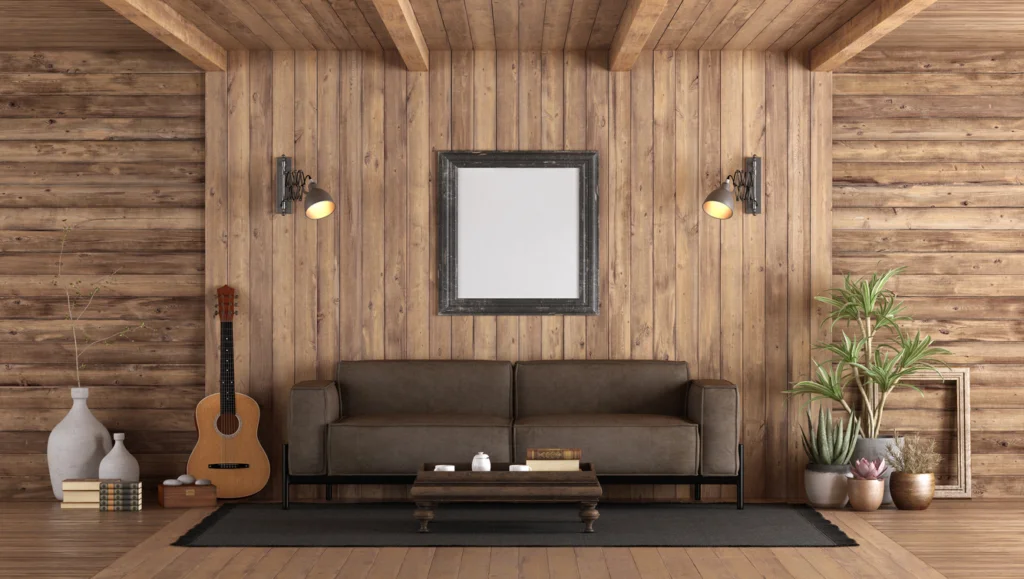
Dark wood paneling once covered the walls of dens, basements, and family rooms across America, creating what we genuinely believed was a sophisticated, cozy atmosphere. These sheets of faux wood veneer transformed ordinary spaces into what we considered the height of adult elegance, especially when paired with matching ceiling beams. The brown, grooved surfaces absorbed light and sound, creating the distinctively dim ambiance that defined 1970s domestic architecture. This trend, House Beautiful reports, is enjoying a comeback in recent years, so if anyone’s in love with their wood detailing, so are many others.
Interior designers now recoil at the memory of these dark, cave-like spaces that dominated home decor for decades. Modern homebuyers encounter these wood-clad time capsules in older homes and immediately budget for their removal, unable to comprehend why anyone would voluntarily shroud their living spaces in simulated lumber. Yet for those who grew up with it, the sight and even smell of wood paneling triggers powerful memory responses, transporting us back to basement game rooms and family gatherings in instantly recognizable surroundings.
4. Landline Phones with Cords

The corded telephone was once the communication center of every home, typically mounted on a kitchen wall or perched on a dedicated phone table in the hallway. These devices tethered us physically to our conversations, creating a radius of movement dictated by the stretched length of the coiled cord—a limitation we accepted without question. Family members developed an entire choreography around these stationary communication hubs, whispering “It’s for you!” across rooms and negotiating time limits for teenage conversations.
These anchored communication posts have virtually disappeared, replaced by wireless handsets and eventually cell phones that removed all constraints on where we could talk. Gone too are the distinctive telephone behaviors: the careful unwinding of a tangled cord, the privacy-seeking stretch into closets or around corners, and the familiar yanking sensation when you absentmindedly walked too far. Children today will never know the specific frustration of having an important call interrupted because someone in another room needed to use the phone, nor the peculiar intimacy of family members passing a single handset between them.
5. Intercoms and Door Buzzers
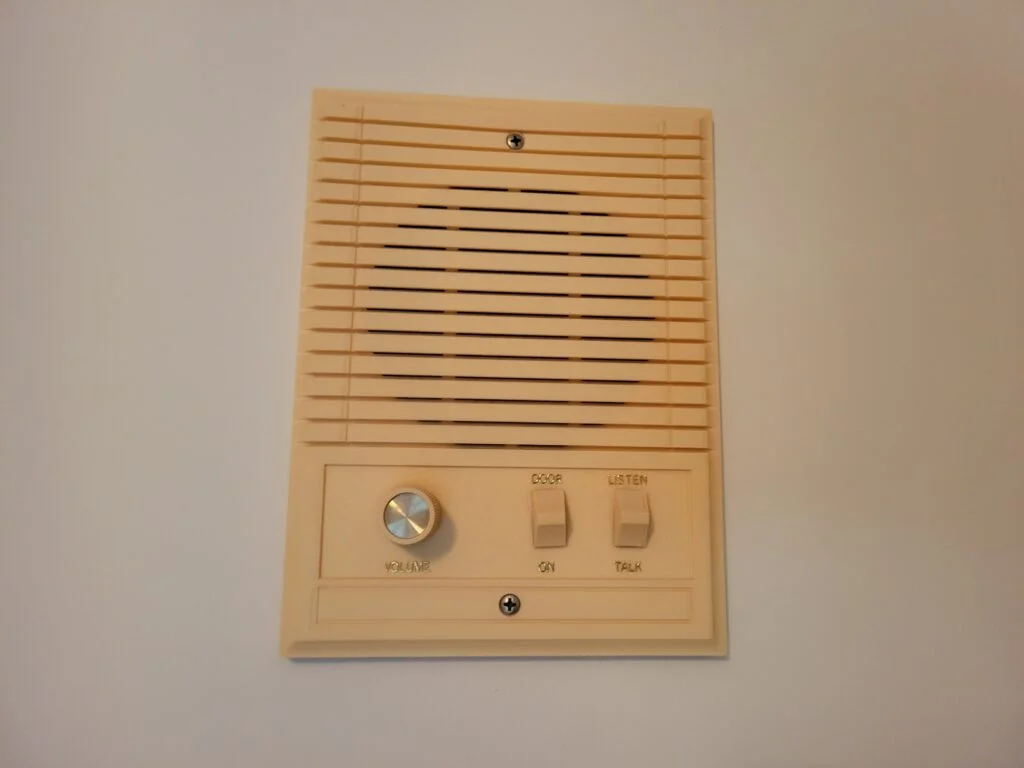
Many homes once featured built-in intercom systems that seemed impressively high-tech, allowing family members to communicate between floors without shouting. Parents could announce dinner from kitchen control panels, speaking through wall-mounted speakers that crackled with authority throughout the house. These wired networks of domestic communication came with door buzzers for apartment dwellers, creating the familiar ritual of “buzzing someone up” after identifying them through a brief, static-filled exchange.
Today’s smart homes have quietly replaced these dedicated systems with wireless alternatives that lack the distinctive charm of pressing a button and speaking into a wall. The mechanical door buzzer, with its harsh electronic tone and satisfying physical release mechanism, has largely been replaced by video doorbells and smartphone notifications. Something has been lost in this transition—the unique vulnerability of identifying yourself through voice alone and the comforting routine of that unmistakable buzzing sound granting entry.
6. Pull-Down Maps in Studies

Home offices and studies once commonly featured pull-down maps, ready to settle geographic disputes or plan vacations with the satisfying snap of their spring-loaded mechanisms. These classroom-inspired fixtures represented serious intellectual engagement, marking a space as dedicated to learning and worldly knowledge. The distinctive smell of their vinyl surfaces and the gentle sway as they settled into position created a multisensory experience that Google Maps can never replicate.
These wall-mounted reference materials disappeared gradually as digital alternatives rendered them obsolete and perpetually outdated. Their absence represents more than just a decorative change—it marks a shift in how we interact with information in our homes, from physical, shared reference points to individual, screen-based experiences. The countries depicted on those maps have changed their names and borders, but the memory of tracing routes with our fingers across their smooth surfaces remains vivid for those who grew up with the world literally at their fingertips.
7. Dedicated Sewing Rooms

Many homes once included specific spaces dedicated to sewing and mending, equipped with built-in cabinets for patterns and fabrics. These creative sanctuaries, often doubling as guest rooms, centered around sturdy sewing machines permanently installed in specialized furniture designed to fold away when not in use. The presence of these dedicated craft spaces reflected a time when clothing repair was an essential household skill rather than an occasional hobby.
The disappearance of these purpose-built sewing spaces mirrors broader changes in consumer culture and gender roles within the home. Fast fashion eliminated much of the economic incentive for home garment making and repair, while changing family structures reduced the time available for such labor-intensive domestic activities. Modern homes rarely allocate specific square footage to sewing functions, with craft activities instead temporarily colonizing dining tables or spare bedrooms—a telling shift in what we consider essential domestic infrastructure.
8. Ironing Centers and Laundry Chutes
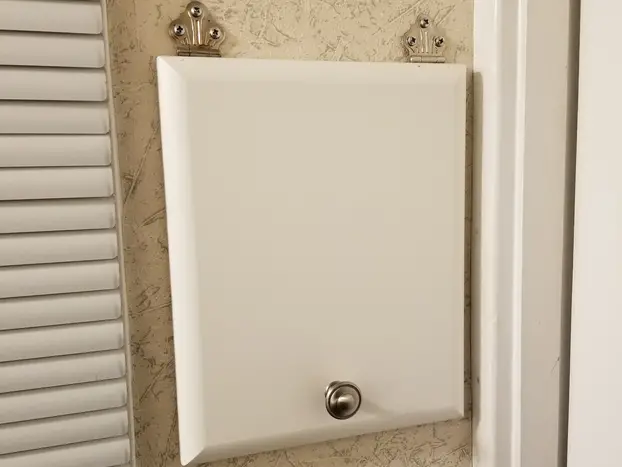
Purpose-built ironing centers once represented the height of domestic efficiency, featuring fold-down ironing boards built directly into wall cabinets or dedicated pressing rooms with specialized electrical outlets. These permanent pressing stations were complemented in many homes by laundry chutes—those magical vertical tunnels that transported dirty clothes directly to basement laundry rooms without requiring trips down the stairs. Both features reflected an era when household management was approached with almost industrial efficiency.
These specialized laundry features have largely disappeared from contemporary home design, victims of both changing fashion (less press-intensive fabrics) and safety concerns (the irresistible temptation laundry chutes presented to adventurous children). Their absence marks a shift in how we prioritize household tasks—modern homes emphasize entertaining spaces over utilitarian functions, relegating laundry to more compact, multi-purpose areas. Remaining examples of these features in older homes are now often repurposed or sealed over during renovations, leaving only memories of the satisfying thud of clothes landing in basement hampers.
9. Built-In Ashtrays

Home entertaining spaces once featured built-in ashtrays as standard fixtures, integrated into chair arms, coffee tables, and even bathroom counters. These permanent receptacles for cigarette ash reflected an era when smoking indoors was not just accepted but expected, with architectural accommodations made for this ubiquitous social activity. The materials varied—ceramic, glass, metal—but their presence was so universal that few questioned their permanent installation in our living spaces.
The dramatic reversal in smoking norms has rendered these fixtures obsolete, leaving strange indentations and unexplained circles in vintage furniture that puzzle younger generations. Homeowners renovating older properties often discover ashtrays built into unexpected places like shower stalls and kitchen counters, physical reminders of how dramatically social behaviors can change within a lifetime. These architectural fossils preserve evidence of practices that once seemed so normal that people literally built them into the structure of their homes, never imagining a future where they would become baffling curiosities.
10. Milk Delivery Doors
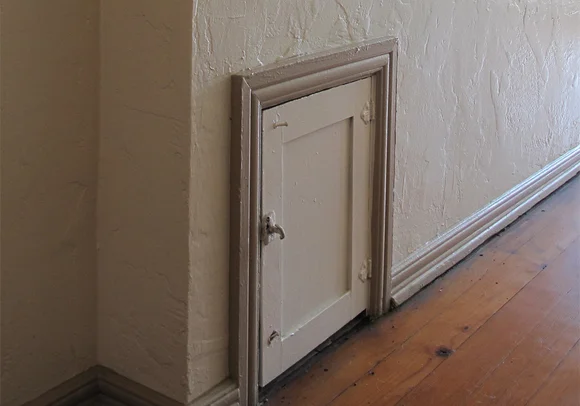
Small, dedicated doors built into exterior walls once served the specific purpose of receiving daily milk deliveries without human interaction. These specialized portals—often with their own tiny hinges and latches—connected directly to insulated boxes that kept dairy products cool until the homeowner retrieved them. The milk door represented a unique intersection of architecture and daily commerce, facilitating a service rhythm that structured many households’ mornings.
These purpose-built openings have been sealed up in most homes, their function rendered obsolete by refrigeration advances and changing grocery shopping patterns. The few that remain serve as quaint reminders of a service infrastructure that once connected homes directly to regular deliveries—the physical embodiment of subscription services before the digital age. Some homeowners preserve these charming architectural details even when non-functional, valuing them as conversation pieces that connect their homes to a disappeared way of life centered around local delivery services.
11. Telephone Nooks and Message Centers
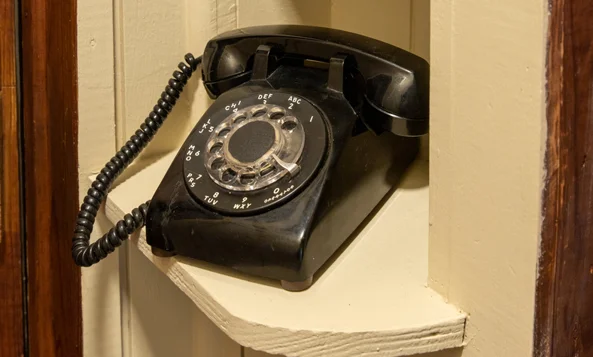
Many homes featured specialized alcoves designed specifically for telephone equipment and message-taking activities, acknowledging the central role of voice communication in family life. These dedicated spaces—ranging from simple wall-mounted shelves to elaborate built-in desks with message cubbies—created a centralized hub for family communication. The typical setup included storage for phone books, message pads, and writing implements, all designed around the immobile anchor of a landline telephone.
These communication stations have disappeared from home design, their function absorbed by mobile devices that travel with us throughout the house. The distinctive behaviors they supported—taking messages for other family members, looking up numbers in printed directories, negotiating turns for the shared resource of a single telephone line—have also vanished from daily domestic life. What remains in some older homes are awkwardly sized wall niches or built-in desks in central hallways, their original purpose increasingly difficult to explain to digital natives who have never had to ask, “Can you take a message?”
12. Formal Living Rooms
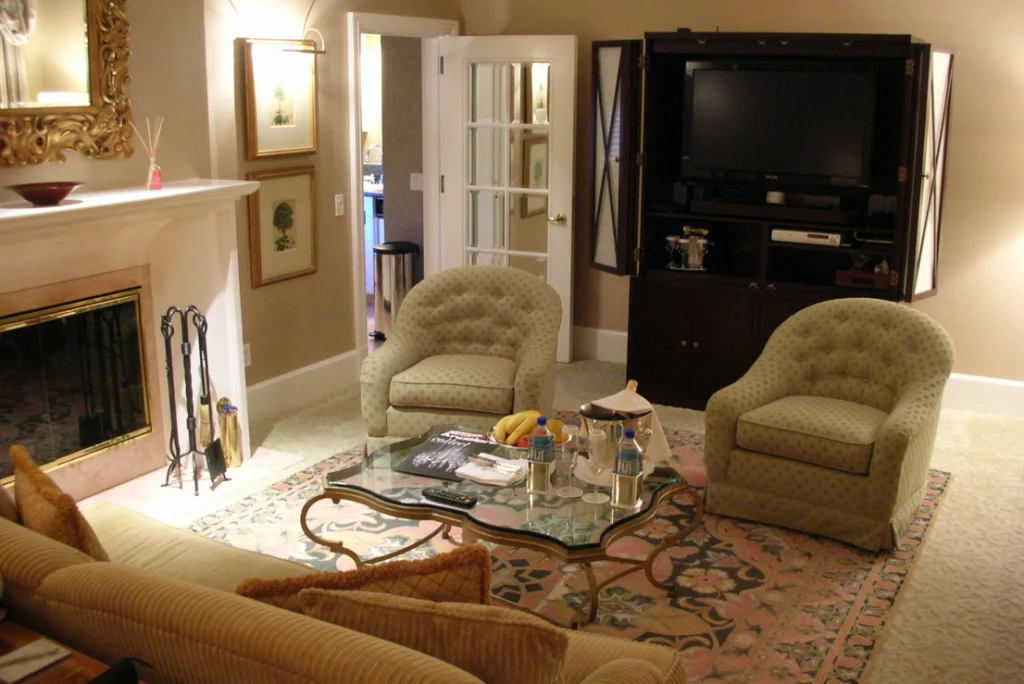
The formal living room—a showcase space reserved for special occasions and important visitors—was once considered essential in any respectable home. These carefully maintained areas featured the household’s best furniture, most delicate decorative objects, and were often off-limits for everyday family activities. The formal/casual distinction was physically built into many floor plans, with separate spaces designated for “company” versus family use, reflecting rigid social boundaries that governed domestic life.
This concept of ceremonial space within private homes has largely disappeared, replaced by open-concept designs that prioritize multifunctionality and casual living. Modern homeowners often view these rarely-used formal spaces as wasteful, preferring great rooms that combine social, dining, and food preparation activities into single, continuously used areas. The disappearance of formal living rooms signals more than just architectural preference—it represents a fundamental shift in how we conceptualize hospitality, comfort, and social performance within our homes.
13. TV Armoires and Entertainment Centers
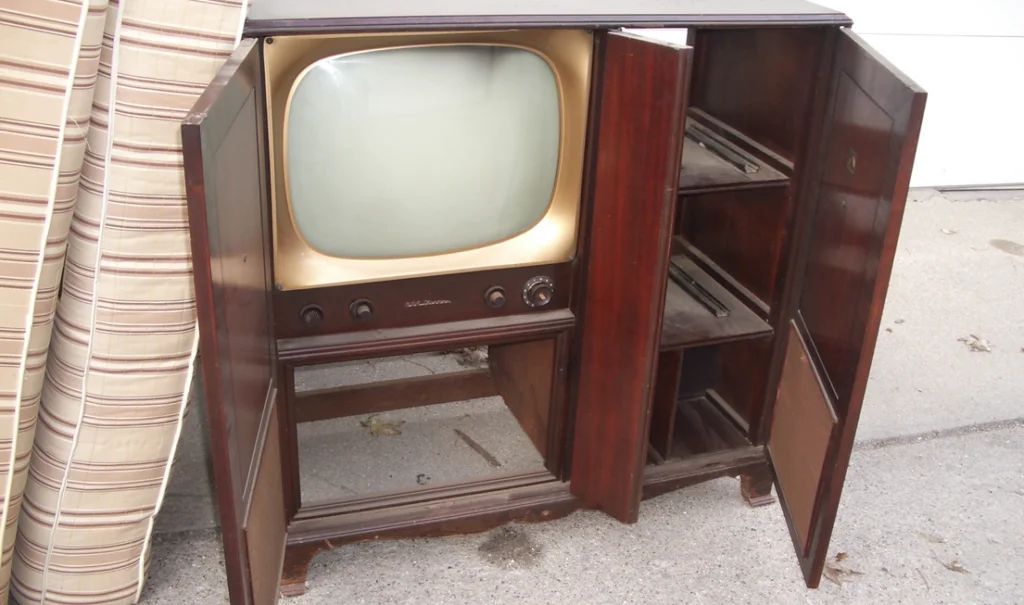
Massive furniture pieces dedicated solely to housing television equipment once dominated our living spaces, their dimensions determined by the substantial depth requirements of cathode ray tube technology. These imposing cabinets featured specialized compartments for VCRs, cable boxes, and extensive media libraries, often serving as the visual centerpiece around which entire rooms were organized. The most elaborate versions included pocket doors to conceal screens when not in use, maintaining the fiction that television was an occasional rather than constant presence in our homes.
The transition to flat screens eliminated the need for these deep, specialized furniture pieces, fundamentally changing both room layouts and the visual prominence of television in domestic spaces. Modern homes typically mount displays directly on walls, removing the substantial footprint once required for viewing technology. The entertainment center’s disappearance represents not just technological evolution but a shift in our relationship with media—from enclosed equipment requiring dedicated furniture to seamlessly integrated screen experiences that no longer pretend to be occasional intrusions into our living spaces.
Home features come and go with changing technology, social norms, and design preferences, but they leave behind powerful imprints on our memories and expectations. These disappeared elements aren’t just architectural curiosities—they’re physical manifestations of how we once lived, communicated, and organized our domestic worlds. While modern homes offer unprecedented convenience and connectivity, there’s a special nostalgia for these vanished features that once seemed so permanent and essential. They remind us that what seems normal and necessary today may someday become a quaint memory, puzzling to future generations who will wonder how we ever lived this way.


